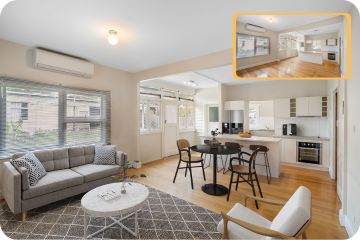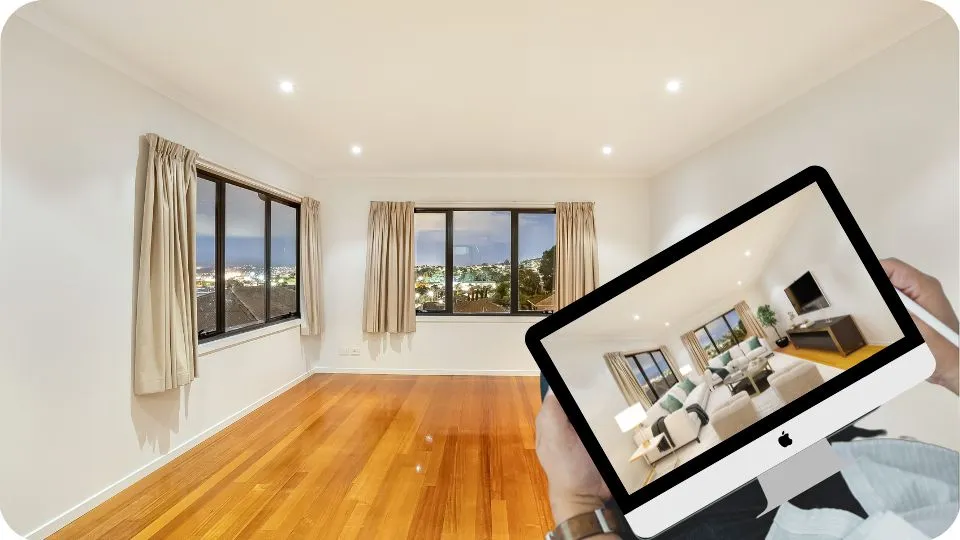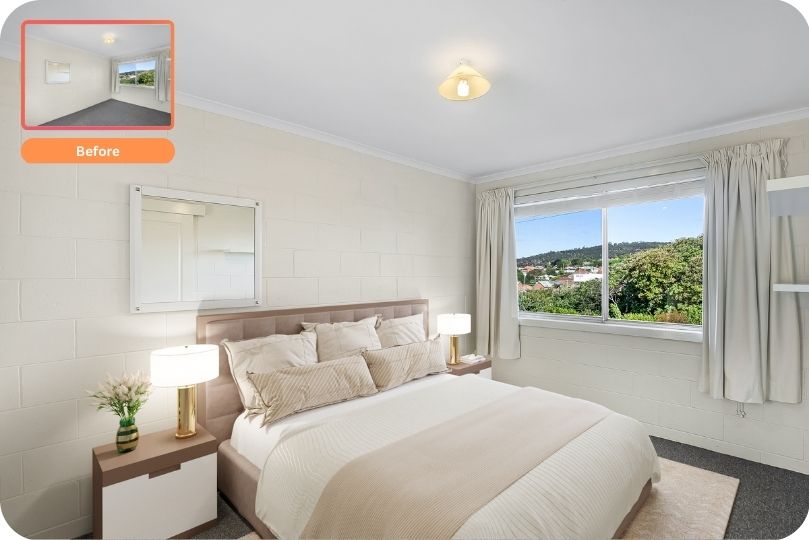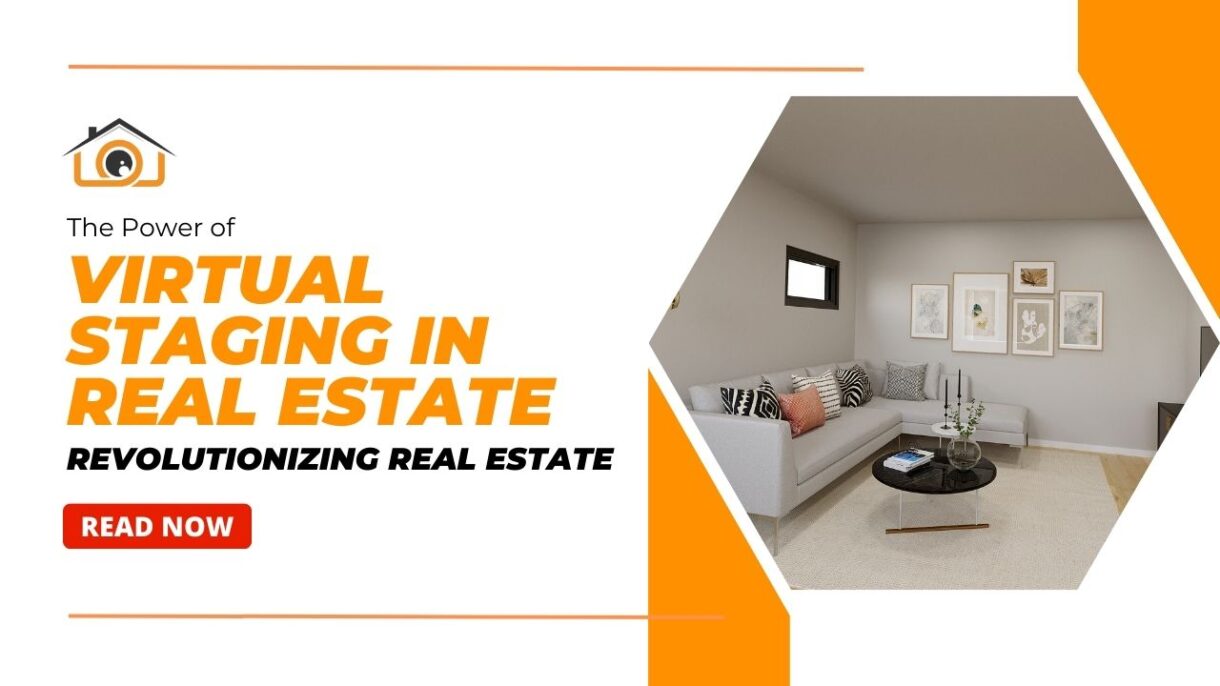Maximize Sales with Virtual Staging in Real Estate: 5 Powerful Strategies Unveiled
In the dynamic realm of real estate, first impressions be counted. Potential shoppers aren’t most effective seeking homes that meet their criteria however also are interested in visually attractive listings. Enter virtual staging, a transformative solution that has revolutionized the way houses are offered in the virtual panorama.
Virtual staging is extra than only a buzzword; it is a powerful device reshaping the real estate industry. In this comprehensive guide, we’ll delve into the intricacies of virtual staging in real estate, exploring its definition, blessings over conventional techniques, the technology at the back of it, and its profound impact on assets advertising.
So, fasten your seatbelts as we embark on a adventure to get to the bottom of the wonders of virtual staging in real estate, coming across how this innovative technique is reshaping the way we show off and sell real estate homes.
Table of Contents
I. What is Virtual Staging?
Virtual staging is an artful mixture of era and creativity aimed toward improving the visible appeal of residences without physically altering them. Unlike conventional staging, which involves furnishing and redecorating a property with real fixtures and décor, virtual staging is a digital procedure. Through the usage of advanced imaging strategies and photo layout software program, virtual stagers can digitally insert fixtures, décor, and different elements into photos of vacant or under-provided areas.
Explanation of Virtual Staging Process:
The virtual staging method usually starts of evolved with outstanding photos of the property. Skilled designers then use specialized software to carefully choose and integrate virtual furnishings, developing a realistic and inviting representation of each room. This process allows for personalization based totally on the property’s fashion, target market, and marketplace trends.
Comparison with Traditional Staging:
While conventional staging has its deserves, virtual staging in real estate offers various benefits that deal with many demanding situations faced by way of real estate specialists. Virtual staging gets rid of the need for physical fixtures and accessories, decreasing expenses and allowing for quicker turnaround times. Additionally, it provides the flexibility to show off more than one patterns, catering to various consumer alternatives.

Advantages of Virtual Staging in real estate:
- Cost-Efficiency: Virtual staging is a cost-effective alternative to traditional staging, making it accessible to a broader range of property sellers.
- Time-Saving: Traditional staging can be time-consuming, requiring coordination and setup. Virtual staging allows for swift transformations, enabling faster listing preparations.
- Versatility: Virtual staging offers the flexibility to experiment with various styles and configurations, catering to a broader audience.
II. How Virtual Staging in Real Estate Works
Digital Rendering and Imaging Techniques:
Virtual staging relies on sophisticated digital rendering techniques. Designers use 3D modeling, rendering software, and image editing tools to seamlessly integrate virtual elements into photographs. The goal is to create a visually cohesive and realistic representation that captures the essence of a fully furnished space.
Integration with Real Estate Photography:
High-quality photography is the foundation of effective virtual staging. Professional real estate photographers capture the essence of each room, providing a blank canvas for virtual stagers. The synergy between skilled photographers and virtual staging experts ensures a seamless integration of virtual elements into the existing space.
Customization Options for Different Spaces:
One of the key strengths of virtual staging is its adaptability to various property types and styles. Whether staging a modern apartment, a classic suburban home, or a commercial space, virtual staging in real estate allows for tailored solutions. Designers can adjust styles, color schemes, and furnishings to align with the property’s unique features and the target market’s preferences.
III. Benefits of Virtual Staging
Cost-Efficiency Compared to Physical Staging:
Traditional staging involves expenses related to furniture rental, transportation, and setup. Virtual staging in real estate eliminates these costs, making it a more budget-friendly option for property sellers. This financial advantage extends to real estate professionals looking to enhance listings without significant upfront investments.
Time-Saving and Quick Turnaround:
In the dynamic realm of real estate, timing is crucial. Traditional staging can be a time-consuming process, requiring coordination among multiple parties and meticulous setup. Virtual staging in real estate, on the other hand, offers a quick turnaround, allowing properties to be efficiently prepared for listing and potential buyers.

Increased Buyer Engagement and Interest:
Virtual staging in real estate enhances the visual appeal of property listings, capturing the attention of potential buyers browsing online. The immersive and professionally staged images stand out in a competitive market, drawing viewers into the space and generating greater interest. This increased engagement can translate into more inquiries, showings, and ultimately, a faster sale.
IV. Target Audience for Virtual Staging
Virtual Staging for Real Estate Agents:
Virtual staging is a valuable tool for real estate agents aiming to elevate the presentation of their listings. Agents can use virtual staging to showcase a property’s potential and appeal to a broader audience, ultimately facilitating faster sales.
Property Developers:
For property developers presenting new or under-construction developments, virtual staging offers a compelling way to showcase the envisioned final product. This helps developers market properties effectively and secure pre-sales during the construction phase.
Homeowners Looking to Sell:
Individual homeowners looking to sell their properties can benefit from virtual staging to maximize their home’s visual appeal. Virtual staging provides an opportunity to present spaces in their best light, making them more attractive to potential buyers.
V. Potential Challenges and Considerations
Ethical Considerations in Visual Representation:
While virtual staging in real estate offers numerous advantages, ethical considerations come into play. It’s crucial to ensure that virtual representations accurately reflect the property’s condition and potential. Misleading visualizations may lead to disappointed buyers and damage the reputation of real estate professionals.
Limitations and Drawbacks of Virtual Staging:
Virtual staging has its limitations, and it’s essential to be transparent about its virtual nature. Buyers who visit a property in person should encounter a space that aligns with their expectations based on virtual representations. Additionally, virtual staging may not be suitable for every property, and some may benefit more from traditional staging methods.
Balancing Realism and Enhancement:
Achieving the right balance between realism and enhancement is critical in virtual staging in real estate. While the goal is to make a property visually appealing, it’s important not to misrepresent its features. Striking this balance requires skill and a keen understanding of the property’s unique characteristics.
VI. Future Trends in Virtual Staging
Technological Advancements and Innovations:
The field of virtual staging continues to evolve with advancements in technology. As virtual reality (VR) and augmented reality (AR) technologies progress, we can anticipate more immersive and interactive virtual staging experiences. These innovations may allow potential buyers to virtually tour a staged property from the comfort of their homes.
Emerging Trends in Real Estate Marketing:
Virtual staging is just one aspect of the broader trend toward digitization in real estate marketing. As technology continues to play a central role in property presentation, we can expect to see more integrated solutions, such as virtual walkthroughs, AI-driven property recommendations, and enhanced virtual staging tools.

Industry Projections:
The adoption of virtual staging is likely to increase across the real estate industry. As more professionals recognize its benefits in terms of cost, efficiency, and visual impact, virtual staging is poised to become a standard practice in property marketing. This shift will be driven not only by technological advancements but also by the demand for visually compelling listings in an increasingly competitive market.
Conclusion
Recap of Virtual Staging Benefits:
In conclusion, virtual staging in real estate stands as a game-changer in the real estate industry, offering a host of benefits that extend beyond cost savings. From time efficiency to increased buyer engagement, virtual staging in real estate has proven its effectiveness in enhancing property listings and expediting the sales process.
Encouraging Adoption in the Real Estate Industry:
As the real estate landscape evolves, embracing innovative tools like virtual staging becomes imperative for professionals seeking a competitive edge. Real estate agents, property developers, and homeowners can leverage virtual staging to elevate their marketing strategies, attract a wider audience, and achieve successful sales outcomes.
Final Thoughts on the Future of Virtual Staging:
The future of virtual staging in real estate looks promising, with ongoing technological advancements and a growing recognition of its impact. As virtual staging becomes more ingrained in real estate marketing practices, it will not only reshape how properties are presented but also contribute to a more streamlined, efficient, and visually captivating industry.
